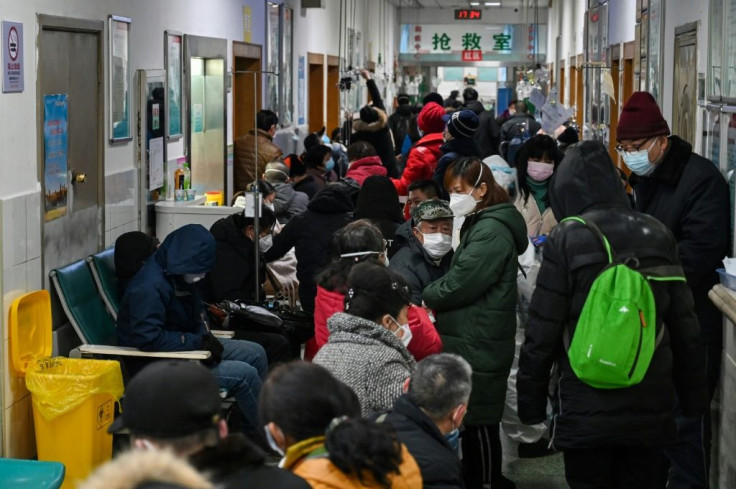Coronavirus Can Linger In Air Of Crowded, Non-Ventilated Places: Study

KEY POINTS
- Researchers detected airborne SARS-CoV-2 in certain locations in hospitals in Wuhan
- Hospital toilets with no ventilation were among the rooms with elevated SARS-CoV-2 levels
- The WHO maintained that droplets are the primary mode of transmission for COVID-19
Researchers of a new study found traces of coronavirus in the air in certain settings. The virus was undetected in some of the locations, but was found in unventilated and crowded areas.
For a new study, researchers led by Ke Lan of Wuhan University set up aerosol traps in 31 locations in and around two hospitals in Wuhan during the outbreak in February and March. They did this in an attempt to determine the possible aerodynamic nature of SARS-CoV-2, the virus that caused COVID-19, by measuring the viral RNA in aerosols in the different areas of the hospitals.
The researchers found "very low" traces of SARS-CoV-2 RNA in the isolation wards as well as in ventilated patient rooms, while the virus was also undetectable in the majority of public areas. However, patient toilet areas that were not ventilated as well as the rooms where health workers removed their personal protective equipment had elevated concentration levels. Further, the virus was also detectable in two public areas that are prone to crowds, possibly due to infected virus carriers being among the people.
"We found that some medical staff areas initially had high concentrations of viral RNA with aerosol size distributions showing peaks in submicrometre and/or supermicrometre regions, but these levels were reduced to undetectable levels after implementation of rigorous sanitization procedures," the researchers wrote. "Our results indicate that room ventilation, open space, sanitization of protective apparel, and proper use and disinfection of toilet areas can effectively limit the concentration of SARS-CoV-2 RNA in aerosols. Future work should explore the infectivity of aerosolized virus."
Compared to droplets, which are heavy and large, aerosols are lighter and can linger in the air. In March, an expert in the transmission of viruses via aerosol, Dr. Linsey Marr of Virginia Tech, explained to The New York Times that aerosols released from a height of six feet will likely fall to the ground within 34 minutes. Further, the amount of the virus quickly disperses in the air, so there will be too little of the virus in the air to be dangerous for anyone who is already a few feet away.
"It sounds scary but unless you're close to someone, the amount you've been exposed to is very low," Marr said.
So far, the WHO has maintained COVID-19 spread primarily through respiratory droplets passed from people's mouths or noses when they cough, sneeze or speak. These droplets, according to the agency, quickly dropped to the ground and did not travel far. However, they can still linger on surfaces, which people can touch and possibly infect themselves if they then touch their eyes, nose or mouth.
FACT: #COVID19 is NOT airborne.
— World Health Organization (WHO) (@WHO) March 28, 2020
The #coronavirus is mainly transmitted through droplets generated when an infected person coughs, sneezes or speaks.
To protect yourself:
-keep 1m distance from others
-disinfect surfaces frequently
-wash/rub your 👐
-avoid touching your 👀👃👄 pic.twitter.com/fpkcpHAJx7
This was why it was important to stay at least a meter away from other people and maintain proper hand hygiene.
"WHO is assessing ongoing research on the ways that COVID-19 is spread and will continue to share updated findings," the agency said .
© Copyright IBTimes 2025. All rights reserved.






















